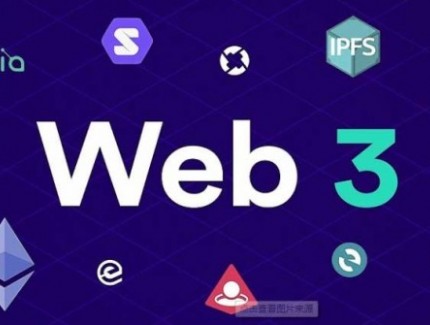法务热门
 《谭谈交通》被诉侵权,原告《授权书》流出
《谭谈交通》被诉侵权,原告《授权书》流出
 规定提前离职不能获得年终奖有效吗
规定提前离职不能获得年终奖有效吗
 合作拍摄影片合同中约定影片亏损由一方补足,虽有效为何不被支持
合作拍摄影片合同中约定影片亏损由一方补足,虽有效为何不被支持
 厦门市人大就《厦门经济特区数据条例(草案)》公开征求意见
厦门市人大就《厦门经济特区数据条例(草案)》公开征求意见
 定金、违约金、损失赔偿金,我都想要!法院:不可同时主张
定金、违约金、损失赔偿金,我都想要!法院:不可同时主张
 父母拆迁置换房,不建议登记在子女夫妻名下
父母拆迁置换房,不建议登记在子女夫妻名下
 图解企业解散过程中各主体的权利与义务
图解企业解散过程中各主体的权利与义务
 【曹说法】平反冤假错案,现在是不是最好的时期
【曹说法】平反冤假错案,现在是不是最好的时期

推荐资讯
 让区块链变成人人可用的工具,上海原创Web3.0操作系统是如何诞生的
让区块链变成人人可用的工具,上海原创Web3.0操作系统是如何诞生的
 隐私之变|自我主张时代变革,从构建WEB3.0的ID体系开始
隐私之变|自我主张时代变革,从构建WEB3.0的ID体系开始
 被投资圈盯上,风头超过元宇宙,Web3.0到底是啥?
被投资圈盯上,风头超过元宇宙,Web3.0到底是啥?
 Web3.0,勾勒下一代互联网模样
Web3.0,勾勒下一代互联网模样
 为什么说中国汽车产业已经真正“支棱”起来了
为什么说中国汽车产业已经真正“支棱”起来了
 我在新能源汽车行业打工10年:从月薪2千涨至年薪40万,终于熬出头
我在新能源汽车行业打工10年:从月薪2千涨至年薪40万,终于熬出头
 对话梅宏院士:数字化转型不是想不想,而是必须转
对话梅宏院士:数字化转型不是想不想,而是必须转
 王兴继续“电商零售梦”:告别社区团购 美团优选变身明日达超市
王兴继续“电商零售梦”:告别社区团购 美团优选变身明日达超市

为何外国公司在中国注册其英文/拉丁文字商标时应同时注册对应的中文商标以及如何选择中文商标
Why Should an Overseas Company Register a Chinese Version for Its English/Latin Word Trademark and How
为何外国公司在中国注册其英文/拉丁文字商标时应同时注册对应的中文商标以及如何选择中文商标
If an overseas company is planning to do business in China, particularly like supplying products orservices in the Chinese market, trademark filing or registration at the CNIPA for the corresponding Chinese version of its English/Latin word trademark or such in other language (“Non-Chinese” hereafter) is necessary and recommended.
如果外国公司计划在中国开展业务,特别是在中国市场提供商品或服务,在中国国家知识产权局申请注册其英文/拉丁或其他语言文字(以下简称“非中文”)文字商标对应的中文商标是有必要的。
Up to now most overseas companies are quite aware of the importance of registering in advance their Non-Chinese word trademark in China to prevent squatting, however many of them were found having overlooked their brands in Chinese characters, which lead to challenges or problems later to these companies. Hereis the summary of the reasons for registering in Chinese characters for the said Non-Chinese word trademarks:
到目前为止,大多数外国公司都清楚在中国提前注册其非中文文字商标以防止被抢注,但许多公司忽略了对其商标的中文的注册保护,而此后给自己带来麻烦和挑战。以下是为非中文文字注册相应的中文商标的原因:
1.Trademarks in Chinese characters are certainly easier for Chinese consumers or relevant public to identify and remember, and thus help spread the marks to the Chinese consumers or public.
2.Filing and registration in advance for the corresponding Chinese version of its Non-Chinese word trademark will prevent those “smart heads” and “quick hands” to squat or imitate to profit from misleading or confusion.
3.Trademarks in Chinese characters can avoid negative/bad nicknames.
In the practice, if a Non-Chinese brand is widely welcomed by consumers in the Chinese market but difficult for the Chinese people to read, the public may give some “nicknames” according to their pronunciations or compositions in order to remember. However, such “nickname” may have some negative or some elements of ridicule and joking, which would lead to the damage of the brand.
1、中文商标当然更易于中国消费者识别和记忆,从而有助于将商标传播给中国消费者。
2、提前申请注册非中文文字商标的相应中文商标可以防止恶意抢注者抢先申请注册或模仿,从而从误导或混淆中获利。
3、中文商标可以避免不好的绰号。
在实践中,如果一个中国人难以阅读的非中文品牌在中国市场中广受消费者欢迎,大众为了更好地记忆品牌,会根据其发音或构成自发的取一些“昵称”。然而,这类“昵称”可能会有一些消极的含义或存在一些嘲讽、开玩笑的成分,结果会导致品牌形象受损。
Some previous cases show that Chinese nicknames may be even more popular than the original Non-Chinese brands. Therefore, some squatters may see and seek the opportunity to preemptively register trademarks (including the nicknames) in Chinese characters, which may bring unnecessary trouble to the use and promotion of the original Non-Chinese brands in the Chinese market, such as causing confusion to consumers about the source of the goods, or increasing the risk of using their Chinese nicknames to produce counterfeits. In the follow-up proceedings, the real brand owners have to spend a lot of money and time to protect or defend their rights, examples of such include Google v.s. 谷歌, “Mamma Mia!” v.s. “妈妈咪呀”, and “Jordan” v.s. “乔丹”, to name just a few.
之前的一些案例表明,中国消费者取的昵称可能比原创的非中文文字品牌名称更受欢迎。因此,一些抢注者会看到抢注中文商标的机会,这可能会给原创的非中文品牌在中国市场的使用和推广带来不必要的麻烦,比如造成消费者对商品来源的混淆,或增加抢注者使用中文昵称生产假冒产品的风险。在后续诉讼程序中,真正的品牌所有者必须投入大量金钱和时间来保护或捍卫自己的权利,仅举几例,如“Google”诉“谷歌”案、“Mamma Mia!”诉“妈妈咪呀”案、“Jordan” 诉“乔丹”案。
Coming next, is how shall a Non-Chinese trademark be translated into Chinese? Normally an overseas applicant has three options: translation, transliteration or a combination of both translation and transliteration. The ideal way is to make the translation/transliteration positive and attractive while maintaining a strong connection to the original Non-Chinese language, as the following examples show:
1.Transliteration: 拉菲(LAFITE),迪士尼(Disney),西门子(Siemens),福特(Ford),亚马逊(Amazon),奥迪(Audi),耐克(NIKE),阿迪达斯(Adidas),谷歌(Google).
2.Translation: 步行者(WALKMAN),空客(Airbus),脸书(Facebook),壳牌(Shell),通用(General Electric), 大众(Volkswagen),微软(Microsoft),软银(Softbank).
3.The combination of transliteration and translation: 可口可乐(Coca Cola), 宜家(IKEA),宝马(BMW),奔驰(Mercedes-Benz),保时捷(Porsche),露华浓(REVLON),爱马仕(Hermès),家乐福(Carrefour),领英(linkedIn),联合利华(Unilever),达美航空(Delta),百安居(B&Q),赛百味(Subway).
接下来的问题是如何将非中文文字商标翻译成相应且适当的中文。通常,外国申请人有三种选择:意译、音译或者意译和音译的结合。理想的方法是使意译/音译含义积极并且具有吸引力,同时保持与原来的非中文文字的紧密联系,如以下示例所示:
1、 音译:拉菲(LAFITE), 迪士尼(Disney), 西门子(Siemens), 福特(Ford), 亚马逊(Amazon), 奥迪(Audi), 耐克(NIKE), 阿迪达斯(Adidas), 谷歌(Google)。
2、 意译:步行者(WALKMAN), 空客(Airbus), 脸书(Facebook), 壳牌(Shell), 通用(General Electric), 大众(Volkswagen), 微软(Microsoft), 软银(Softbank)。
3、 意译和音译的结合:可口可乐(Coca Cola), 宜家(IKEA), 宝马(BMW), 奔驰(Mercedes-Benz), 保时捷(Porsche), 露华浓(REVLON), 爱马仕(Hermès), 家乐福(Carrefour), 领英(linkedIn), 联合利华(Unilever), 达美航空(Delta), 百安居(B&Q), 赛百味(Subway)。
Before last, the same filing and registration is also recommended in Hong Kong and Macao in addition to the Chinese Mainland, and Taiwan as well, as Chinese are much more commonly used by the people there even if English or Portuguese are also the official languages in Hong Kong and Macao on the one hand, and the exchanges of people and business are much more frequent on the other.
最后,除中国大陆和台湾外,在香港和澳门我们同样建议申请注册中文商标,因为一方面,虽然英语或葡萄牙语也是香港和澳门的官方语言,但人们实际上更多使用中文,另一方面,这些区域之间的人员往来与企业之间的交流也要频繁得多。
更多相关内容
-
形容喝老白茶的心情(形容老白茶好喝的文字)
爱茶的人大多对“老”有一种情结,那是茶树成长过程的坚韧,加上岁月的沉淀,慢慢蕴酿出的独特韵味。特...
-
办理福建中字头无区域公司核名集团公司核名
专业办理国家局名称!国字头核名、中字头核名、疑难核名、禁用词核名、一般国字头核名、中字头核名!我...
-
【《量子商业》】:【中国链2.0|区块链战争】开启注册
《中国链2.0 | 区块链战争》开启注册【量
-
掌握这5个Ai小技巧,帮你快速提升文字排版效率
来源:天天设计资讯文字编排是学习平面版式的基础,今天就为大家分享几个 Ai 小技巧,简单却能有效提升...
-
| 3人团队 爆款频频!财联社CC新闻详解转型短视频“方法论”
近日,上海报业集团启动融媒工作室赋能计划, 财联社CC新闻作为首批“种子选手”成功入选。 财联...
-
微信又更新,新增图片大爆炸功能~
最近,我的手机端微信又更新啦,发现几个好用功能:1.图片大爆炸功能 2.微信已注销用户 3.青少年模...
-
网页实现文字聚光效果,CSS在浏览器中不加载更改后的代码,如何处理
今天在进行物联网开发时,制作一个网页,在网上找到一个资源,感觉这个效果特别好看,想加入到网页中去...
-
谁说科技风PPT,只能用深色
提起科技风PPT,相信你第一反应是这种暗黑系的酷炫风格:但如果要求在浅色底下体现科技感,你会如何设计...
-
一句话让心情变好(25)
我们都不太喜欢 励志和鸡汤味道太浓的文字, 因为经历过就会知道, 瞬间的热血打不赢生活这场持久...
-
还不会排版
有句话说,“眼睛是心灵的窗户”,人们在日常那个生活中,获取信息的途径绝大 多数是通过眼睛。所以说版...
推荐阅读











